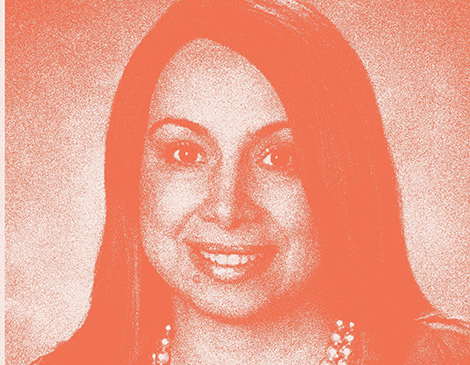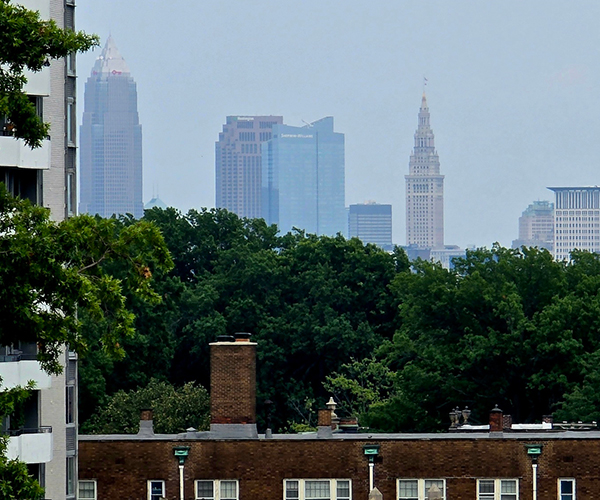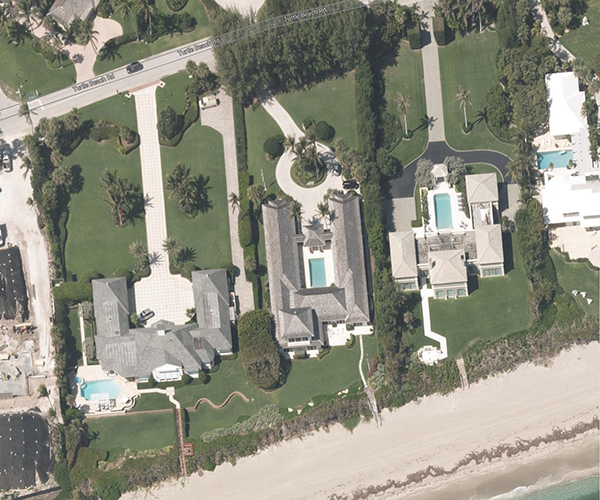Politically charged comments, anti-tax rhetoric and targeted digs at local government abounded at the Northeast Ohio Areawide Coordinating Agency’s Climate Action Plan listening sessions earlier this year. But Greater Cleveland’s metropolitan planning organization is plenty used to addressing and engaging both supporters and skeptics alike.
Those listening sessions were an important part of NOACA’s latest Climate Action Plan, designed to give environmental guidance to Cuyahoga, Geauga, Lake, Lorain and Medina counties. And despite the slightly cynical air around the early January events, Grace Gallucci, the executive director and CEO of NOACA, says they were productive components of the public engagement process.
Gallucci addressed the mixed response to NOACA’s work, along with the organization’s aims to educate and engage Northeast Ohioans in the climate conversation going forward:
“Anything we get, in terms of feedback, is positive. Even the negative is positive because we get to hear what people think and look to see how that impacts the work that we do. We intend to not only have more public outreach and engagement, we have just talked about revising our schedule to produce the Climate Action Plan, in order to have more strategic public engagement.
“If you participated in any of those, you know that there was quite a bit of negative comments coming through. There were a lot of folks that would be termed ‘climate deniers.’ They’re just a lot of folks who wanted to express their concern with developing the plan and that they essentially don’t believe that there’s a need for a Climate Action Plan; they’re saying something like, ‘We don’t need this, so the region doesn’t.’ Again, that’s fine. If they’re a climate action skeptic, I said, ‘That’s okay.’
“Our job is to help educate and bring the information to you — share that information, get your feedback. Hopefully, as it is in most of the cases, we do public outreach. Once we start sharing the information, people do shift their attitudes, and they do change their perspectives, but we’re not here to force anyone to think about anything a certain way. We just want people to give us their opinions and even the negative ones were worthwhile. I will say it was the minority of people in the region — they were strongly represented at those meetings.
“We had 450 total participants. I want to say there were probably 50 of them that do not support us developing a Climate Action Plan. We’ve done some outreach already while we were doing the long-range plan. We had questions in our
survey that asked people what they thought about climate change; did they think it was a problem? And on a scale of one to five, one being it’s not a problem and five being it is a problem, the average for the regions’ respondents was 4.11. So, most people think it is a problem and recognize it is a problem. Similarly, those same people were asked, 'Is Northeast Ohio prepared for climate change?' and the average was 2.79, meaning not enough is being done about it and our elected leaders need to do something. Overall, it appears that people in the region support the idea that climate change is real, that there are impacts on the region and that we, as public officials and public agencies, need to do more to address it and put together this Climate Action Plan.
“We’re looking at it as a region. We understand the global impacts, and we know that we need to address the global situation, but we’re really looking at our own region. What are the risks to our infrastructure? What are the risks to our way of life? We have a region that has urban, suburban and rural. We have farmland in our region. What’s this going to do to farmland, if the climate action issues are not addressed? We have to really think about it as a quality of life, a way of life and preserving that way of life.
“If you think about it that way, maybe it helps people to understand that we’re not talking about something that is so global that you can’t relate to it, and what you’re looking at it is this big scientific problem. It’s science-based at the local level, and also, solutions are at the local level. In order for change to happen, we have to make that change happen and changing our behavior could help make the region more sustainable. Each one of us has something we can do.
“We’re an overall planning agency and we have some funding for implementation, but the implementation happens at the local level. We don’t force implementation. We present a case that we think is a good case and we have the communities accept what they think works for them. Hopefully we’ll be able to make the case that there are so many things that communities can accept to make that change and that doesn’t impact them negatively; quite the opposite. It’s going to impact them positively. Too many times people look at plans like this, that it’s going to take something away. Don’t look at it as it’s going to take something away. Look at it as it’s going to give you so much more. It’s going to give you that better quality of life. You’ll have choices that are good. Options are good.”
Is Cleveland the climate safe haven we think it is? We answer that and other burning questions about Northeast Ohio's environment and climate response.




